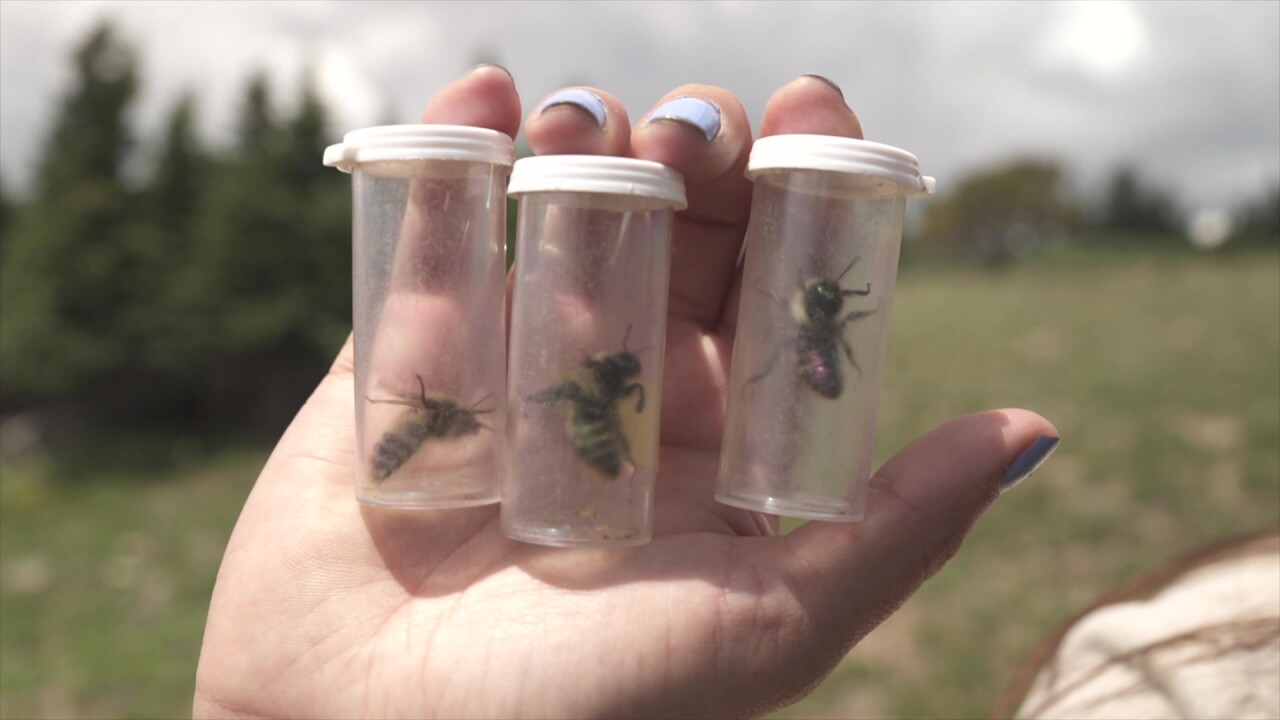SUMMIT COUNTY, Colo. — Bees are a crucial part to keeping our environment in balance, and without them, billions of dollars in crops could be lost and many species of plants could become extinct.
In just the last few years, one-third of the bee population in the U.S. has sharply declined, and many scientists are working to figure out how to preserve these priceless pollinators.
But working every summer in the mountains of Colorado is a unique scientist: Darwin, a two-year-old German Short Haired Pointer. He is the only dog in the country trained to sniff out wild bee nests hidden underground.
Every day, Darwin suits up, and he and his owner, researcher Jacqueline Staab, look for signs of alpine bumblebees working and nesting at high elevations.
“There is nothing like an alpine meadow in the middle of the summer just covered in wildflowers,” said Staab. “This place is just a dream to work.”

Her assignment is one she’s dreamed of for years.
“Ever since I was a little girl, I dreamed of, I used to love ‘K-9 to 5’ on Animal Planet where they used to have the working dogs, and I was like, ‘oh man!’ I always loved dogs,” said Staab. “Then, I ended up having a sustainable farm for two years back in Richlands, North Carolina, and I got really into sustainable farming, and that's all about the bugs, especially the pollinators,” explains Staab of how she fell into this research outside of Breckenridge in Summit County.
Her beautiful office is abuzz with information only Darwin can uncover, but information Staab and teams of researchers are eager to know.
“Not a lot is known about bumblebee nesting because they're so hard to find,” said Staab. “Basically, the only way you can find an exact location of a bumblebee nest is like just like serendipitously stumbling upon one or detection dogs, which is why he's so important.”
Darwin sniffs out the material the nests are made of, giving his signature “point” when he’s found his target.
He’s only been doing this for a short time, but he was able to fetch data Staab and her team from Appalachian State University in North Carolina never imagined they could find: including a brand-new species of bumblebee.
“We did some genome sequencing and found out that it was a different species!” exclaimed Staab.
The nests Darwin finds show how these bees survive harsh conditions and what flowers they like. Every piece of data like this is precious to preserving these pollinators.
“You need to know all the pieces of the puzzle if you're going to save a species,” said Staab.
And she is determined to help save the bumblebees that are disappearing more and more each year.

“A third of bumblebee species right now are facing decline, especially the specialist species, which is what we have a lot of up here,” said Staab.
This decline is a combination of many factors, but Staab says climate change and extreme weather are huge risks along with habitat loss for many species.
Bees are losing their land to people—through agriculture and expanding cities. Without these bees, one study found crops they pollinate like cherries, blueberries, apples, and watermelon could struggle to survive.
Losing bees creates a trickle-down effect. Without bees pollinating plants, we lose plant diversity, and without certain plants, animals may not be able to survive. Eventually, an entire ecosystem could look completely different.
“There's going to be a wide range of ecological consequences,” said Staab.
That’s why Staab wanders the woods for hours each day, looking for tiny holes in the earth. It’s these windows to a different world that can help turn a sour situation into a sweet one.
“If we really start working now and working towards preserving the pollinators, preserving land, figuring out what they need for nesting, overwintering, we can, there's still time to make a difference,” said Staab. “It's not all doom and gloom. We can work together and preserve our precious native pollinators.”
Especially with man’s best friend lending a helping paw. Staab says next year is looking even brighter: her team is looking to add a second bee dog to the team!
You can follow the adventures of Darwin the Bee Dog on social media, HERE.




